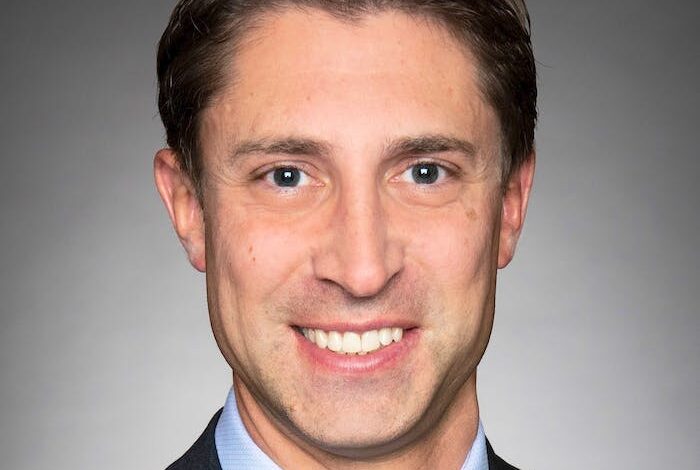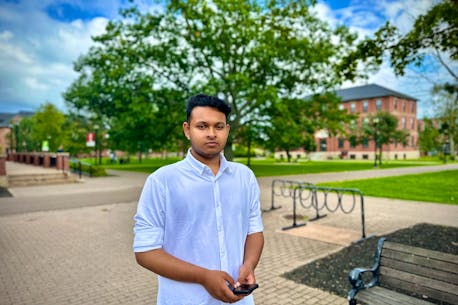As Atlantic Canada struggles with student housing, will other provinces – or even countries – be the winners?

By Javier Ortega-Araiza
Special to SaltWire
Not long after Sean Fraser, Housing Minister and former Immigration Minister, made a comment in Charlottetown floating the idea of setting a cap for international students to ease the pressures on Canada’s strained housing system, several higher education organizations condemned the remarks.
“Recent comments conflating international students and the housing crisis are deeply concerning to Universities Canada and our members,” Lisa Wallace, a spokesperson for Universities Canada, said in a statement on August 23rd.
“International students bring important knowledge, diversity, and skills to our campuses, communities, and workforce. We must continue to welcome them to study at Canadian universities.”
However, whether the country is prepared to welcome them is another story.
Official data reveals that, in the Maritimes, there are now 42,900 international students (considering Nova Scotia, P.E.I., Newfoundland and Labrador, and New Brunswick), with enrollment growing at double digits year-over-year.
When these students arrived, many found themselves with nowhere to live.
The Université de Moncton issued a public call for help, encouraging the community to rent extra rooms to some of its students who didn’t have a place to go, while Memorial University of Newfoundland and Labrador asked faculty and staff to consider renting their available spaces to students.
Other heralded institutions, like the University of New Brunswick, have also been impacted by the student housing crisis.
“UNB is securing additional housing for students and continues to support our incoming students as they transition to a post-secondary environment. We are also reaching out to international students to ensure they secure accommodations before arrival,” a spokesperson for UNB said in a statement.
Securing accommodations before arrival is also something that, prior to the Winter term, Cape Breton University required as mandatory, telling students that, if they had nowhere to live, they were better off deferring their admission.
However, with students coming to Canada in record numbers, the issue still begs the question: If there is no room for students now, where will they go?
After Fraser’s remarks in Charlottetown, Michael Kram, MP for Regina-Wascana, told the CBC that, “What happens in downtown Toronto is not necessarily what happens here in Regina,” and that, “For the longest time, we’ve been trying to attract newcomers to Saskatchewan to build this province,” hinting that the western province did not have the housing issues that seem to be plaguing the rest of the nation and would be ready to welcome those who get stranded elsewhere.
Kram did not respond to New Canadian Media’s request for comment.
Intensified International Competition
Meanwhile, according to a study abroad counsellor network, competition for international students is likely to be higher or even “much higher” than what it was before the pandemic. And now, with housing playing a dominant role in the conversation, some nations will be vying to attract the talent that has been flocking to Canada.
For example, in the United States, schools like John Hopkins University, Arizona State University, the University of New Mexico, and UC Irvine offer some forms of guaranteed housing for international students, and in Europe, nations like Austria are capitalizing on their regulated rental market to offer affordable housing to prospective recruits.
To counter this threat, technology needs to be leveraged.
At a symposium organized by the Urban Institute, Brian Brooks, former chief legal officer at cryptocurrency exchange Coinbase and former general counsel of Fannie Mae–the Federal National Mortgage Association in the United States, commented that this could happen in four ways.
First, by lowering the cost associated with building new housing, broadening availability of financial resources, enhancing our ability to predict risks, and simplifying the process of granting loans to benefit more people who remain marginalized from the financial system.
Technology can also help to provide temporary relief while encouraging community engagement. In Nova Scotia, the provincial government decided to invest $1.3 million in partnering with Happipad, a technology company that helps people rent their spare rooms. This is something that could be scaled and could provide temporary relief, as well as foster a sense of community.
For example, in the Netherlands, an experiment run by independent residential care centre Humanitas connected students — who needed an affordable place to live — with older people who were struggling with loneliness and social isolation, and did so with great success. The concept of intergenerational living became adopted in other regions of the world, generating both social and economic benefits.
The second part has to do with developing purpose-built student accommodations. Even if solutions like Memorial’s plea to faculty and staff could ease the pressure in the short term, Canada, as a nation, still lags behind in terms of having enough buildings to house students.
A report by RENX stated that Canada has enough PBSA (Purpose-Built Student Accommodation) beds to house 12 percent of students, compared to more than 30 per cent in the United States and the United Kingdom.
This can be accomplished through effective public-private partnerships, also known as PPPs.
“A typical PPP in Canada takes the form of a Design-Build-Finance-Operate model, where the private sector designs, finances, and constructs the project under a long-term lease, and subsequently operates the facility during the term of the lease,” reads a report by the Canadian Policy Research Networks.

In this case, the long-term lessor would be the university or college, reducing the risk for the property builder. Other ways in which this can be accomplished include tax incentives to private developers or advantageous allocation of vacant land.
It is a social proposition as much as an economic one.
“More established PBSA markets in the United States and the United Kingdom generated approximately US$10 billion and US$4 billion of investments respectively in 2016, compared to Canadian PBSA markets, which attracted less than US$200 million between 2013 and 2016,” echoes a publication by Canadian business law firm McMillan LLP.
Atlantic Canada is a region with enormous potential and cutting-edge universities, and with good reason, it is considered as a region with enormous potential by study abroad counsellors like Himanshu Barthwal, founder and CEO of Admit Offer, who said, “I believe that the Atlantic provinces are going to be a very popular education destination in the future.”
However, the housing issue not only impacts student attraction but also, the future development of the area by limiting the retention indicators.
As Wendy Luther, president and CEO of the Halifax Higher Education Partnership, said in a statement, “Working together, we can help ensure these students have a positive experience during their studies in Halifax, increasing the likelihood they will build careers here after they graduate.” The same can be said for the rest of Atlantic Canada.
This story and photo are part of a partnership between SaltWire and New Canadian Media.






